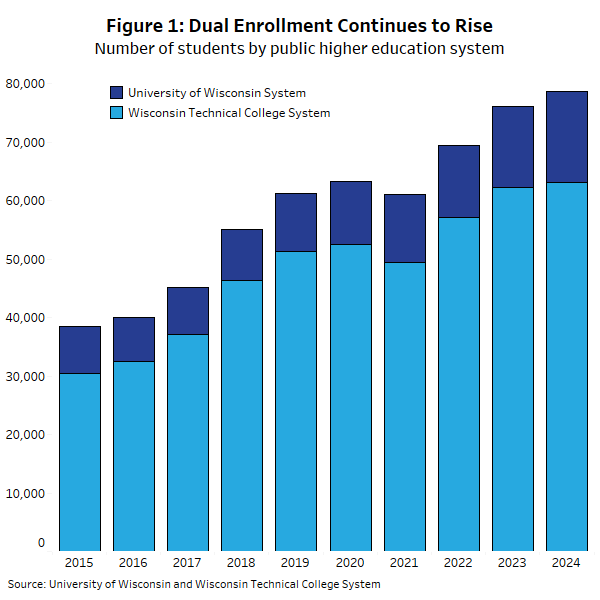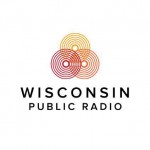Dual Enrollment Bill Aims To Make It Easier For High Schoolers To Take College Classes
One-in-four high school students already participate, but with stark divides based on district.

Students in Superior high school’s Spartan Manufacturing program learn to operate a CNC lathe to create products that are sold and marketed by real businesses in the region. Photo courtesy of Spartan Manufacturing
More than a quarter of Wisconsin’s high school students are earning college credits through dual enrollment programs during the school year.
But studies have shown that participation in these programs varies across the state based on students’ location and their economic status.
Republican legislators are proposing a “Dual Enrollment Reform Bill” they say would simplify the process to make it more accessible for all students.
Sens. Rachael Cabral-Guevara, R-Appleton, and Andre Jacque, R-New Franklin, and Reps. Joel Kitchens, R-Sturgeon Bay, and David Murphy, R-Greenville, co-authored the bill.
Dual enrollment refers to any program where a high school student is taking a class to earn college and high school credit at the same time.
It is different than Advanced Placement classes, which offer high school students a chance to take university-level courses and earn college credit if they pass an assessment test.
The proposed bill would create an online portal through the Department of Workforce Development to let families know about dual enrollment options across the state.
The bill would also create an oversight council with members appointed by several entities, including the Department of Public Instruction, the Wisconsin Technical College System, the Universities of Wisconsin and the Wisconsin Association of School Boards.
This group would make recommendations to ensure all students and their families have affordable and attainable pathways to college credit during high school.
“Right now the program is pretty complex,” Murphy said. “One of my goals is that a high school counselor could hand a student or a parent a pamphlet explaining the program to them.”

Dual enrollment has grown from 38,435 students in 2015 to 78,703 students in 2024. Source: Wisconsin Policy Forum
According to a July 2025 report from the Wisconsin Policy Forum, participation in dual enrollment has grown from 38,435 students in 2015 to 78,703 students in 2024.
The majority of the students — 63,115 — are attending classes through the Wisconsin Technical College System, with the remaining taking classes through UW.
And the process of transferring credits between the UW System and the technical college system can be difficult.
The legislation would streamline deadlines and require the Board of Regents and Wisconsin Association of Independent Colleges and Universities to enter into an agreement that identifies at least 36 credits of core general education courses that are transferable and satisfy general education requirements at either a UW institution or a private college.
An unfair advantage
The Policy Forum report found that schools that were small, urban or with high rates of poverty were least likely to offer dual enrollment courses.
Only half of the schools where 75 percent of the students were from economically disadvantaged households offered dual enrollment programs, compared to 91 percent of the schools where less than a quarter of students were economically disadvantaged, according to the report.
Authors of the Dual Enrollment Reform Bill say this creates an unfair advantage for students in more affluent or larger school districts.
“This disparity is even more pronounced in our rural communities, where limited resources and a lack of local college options often leave students with few, if any, opportunities,” according to legislative documents.
“Getting kids college credits while in high School is one of the best paths to making college work,” Murphy said.
Marquette University’s Black and Latino Ecosystem and Support Transition, or BLEST, Hub has been working with Milwaukee Public Schools and DPI on expanding dual enrollment in Milwaukee.
Gabriel Velez, faculty director for BLEST Hub and head of Marquette’s Dual Enrollment Program, believes the bill takes some immediate action that will help lay the groundwork to tackle deeper issues.
“The changing of dates in particular was easy, low-hanging fruit that created issues for everyone and will help,” Velez said. “Some of the other points will help in making the whole landscape clearer and easier to navigate.”
Velez met with lawmakers in July and said he believes creating a committee will be one of the most significant developments.
Dual Enrollment Reform Bill aims to make program more accessible to students was originally published by Wisconsin Public Radio.
If you think stories like this are important, become a member of Urban Milwaukee and help support real, independent journalism. Plus you get some cool added benefits.




















Dual enrollment is smart!!!
Should be available to anyone qualified!